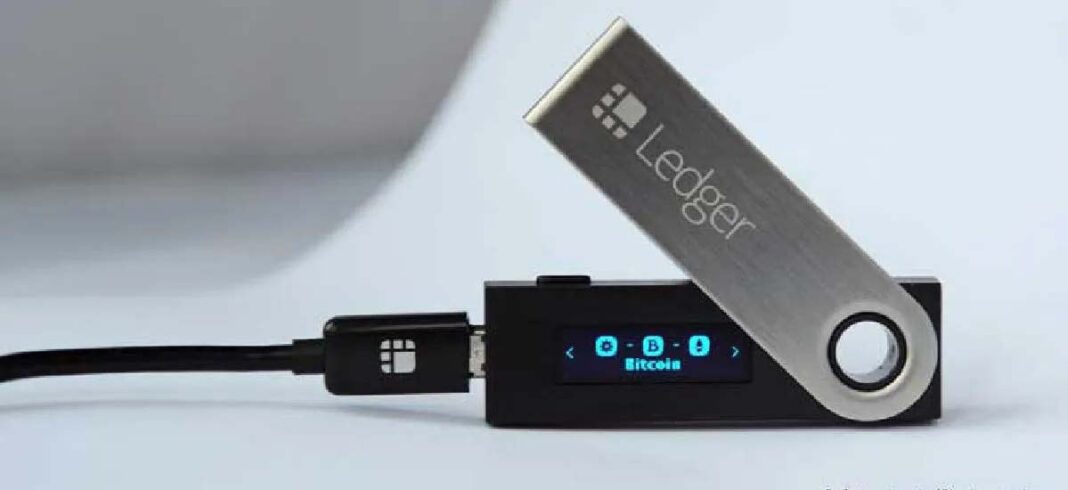One of the most crucial considerations for anyone interested in cryptocurrency is storage. In fact, you must store your cryptos in a location that is both secure and safe when you have ultimately bought them.
Two distinct storage spaces
Since crypto-currencies operate virtually and on the blockchain, unlike traditional money, security is an issue that needs to be carefully considered. They need a brand-new digital storage mechanism called crypto wallets since they are continuously threatened by hackers.
The cryptocurrency wallet is used to store and transfer virtual currency, just as the real wallet. However, compared to traditional wallets, digital or crypto wallets operate very differently. They are made up of data strings that take the form of public and private keys and are used to allow their owners to receive and transfer their assets.
The two types of storage systems for cryptocurrency wallets are then known as hot storage and cold storage, respectively. While it is true that one of these systems is more secure than the other, it is important to clarify the benefits and drawbacks of each system.
Cold Storage
The first storage mechanism to arise with the advent of cryptocurrencies is cold storage. It is adored by investors for the superb security it provides to the assets of its consumers.
Understanding the Cold Storage system is not that difficult. This is how a cryptocurrency owner chooses to hold their assets offline. Then, the cryptocurrency are loaded onto a specific device or through an offline manner.
A method called cold storage is intended for people who want to safeguard their cryptocurrency holdings, such as Bitcoin, from any harmful intrusion attempts. They decide to keep their funds in a wallet that cannot access the Internet in order to eliminate any potential risk. Therefore, cryptocurrency is “cold stored,” for instance on a USB stick or an external hard drive.
Favored storage
Cold Storage appears to be the sole option for cautious investors in a market that is frequently beset by ambiguous dangers (sudden disappearances of huge numbers of tokens after the exploitation of security breaches). Additionally, it is the best storage option for trading platforms looking to secure their data against theft.
The majority of managers of this kind of platform choose to store their reserve with Cold Storage in order to reduce the risk of leakage and widespread theft. They then land on more conventional media, where their money is kept separate from web servers and other computers.
Hardware options like Ledger, a USB key-shaped device, are among the most widely used Cold Storage methods. More than 1,000 distinct cryptocurrencies are available for customers to buy, trade, and invest in.
There is also the Cold Storage Trezor variant in addition to Ledger. It is a little device that supports more than a thousand coins. Both PCs and mobile devices can use it.
Benefits and Drawbacks of Cold Storage
Since the beginning of the bitcoin industry till now, Cold Storage has lasted because it provides its users with some truly amazing benefits. They are able to fully control their private keys and assets thanks to this system.
The majority of cold storage techniques also end up on compact, portable equipment. They may be transported anywhere in the world and are often compatible with a variety of applications. Since the private keys it stores never leave the device, the Cold Storage system is arguably the most secure. In order to make devices less susceptible to cyberattacks, every transaction is local.
Despite all of its benefits, Cold Storage is not without drawbacks. Hardware wallets are extremely expensive, to start. Although there are models available at lower prices, they shouldn’t often be trusted.
Next, take note that transactions between cold storage devices are a little more expensive than those between online wallets. Last but not least, Cold Storage has the same drawbacks as all hardware. Over time, they may disappear or deteriorate.
Warm Storage
Since the emergence of cloud-related technology and the cryptocurrency industry, hot storage has been a thing. Today, both desktop and mobile users can access a variety of Hot Storage services without paying a cent.
Online private key storage is a method known as hot storage. These essentially function as storage solutions that rely on the utilization of hardware that is directly connected to the Internet. Most software wallets support the Hot Storage mechanism.
Although Hot Storage has a large user base, the bitcoin community does not always find it to be satisfying. Indeed, because of its ongoing Internet exposure during design, it is extremely vulnerable to hacker attacks.
The latter don’t think twice to launch attacks on all online wallets that present them with even the smallest security flaw constantly. Additionally, phishing assaults have been used frequently, enabling hackers to steal the entire contents of a user’s wallet.
Several software applications, including MetaMask, are among the most well-known wallets that use the Hot Storage mechanism. The majority of online browsers have this plugin, which allows you to save several crypros. Exodus is another program that can be used on both PCs and mobile devices. The Exodus decentralized exchange platform is immediately accessible through it, and it supports more than 150 cryptocurrencies.
Benefits and Drawbacks of Hot Storage
Hot Storage provides some significant advantages despite the lack of confidence it creates. To begin with, it has a more friendlier ambiance than Cold Storage. They are in fact quite simple to access and simple to utilize because they are almost always connected to the Internet. In addition, the vast majority of hot storage platforms and applications are free.
Security is Hot Storage’s primary drawback in terms of disadvantages. Although these services make every effort to increase the security of their wallets, because they are connected to the internet, they are nevertheless more susceptible to hackers.
Additionally, some of the features that these wallets can offer are occasionally unavailable in particular nations or jurisdictions because they need an almost constant connection.
Which is more secure, hot or cold?
Since cryptocurrencies are built on blockchain technology, hackers will always be interested in them. Although the Cold Storage system is occasionally the target of attacks, the wallets integrating the Hot Storage remain the main target of these malevolent persons.
However, security measures to lessen the vulnerability of the two systems are still being improved. When deciding between a Cold Storage wallet and a Hot Storage model, there are a number of things to take into account.
To receive a transaction experience that is dependable and seamless, many consumers choose to combine the two methods. Everyone will then have to make a decision based on their tastes and goals.



